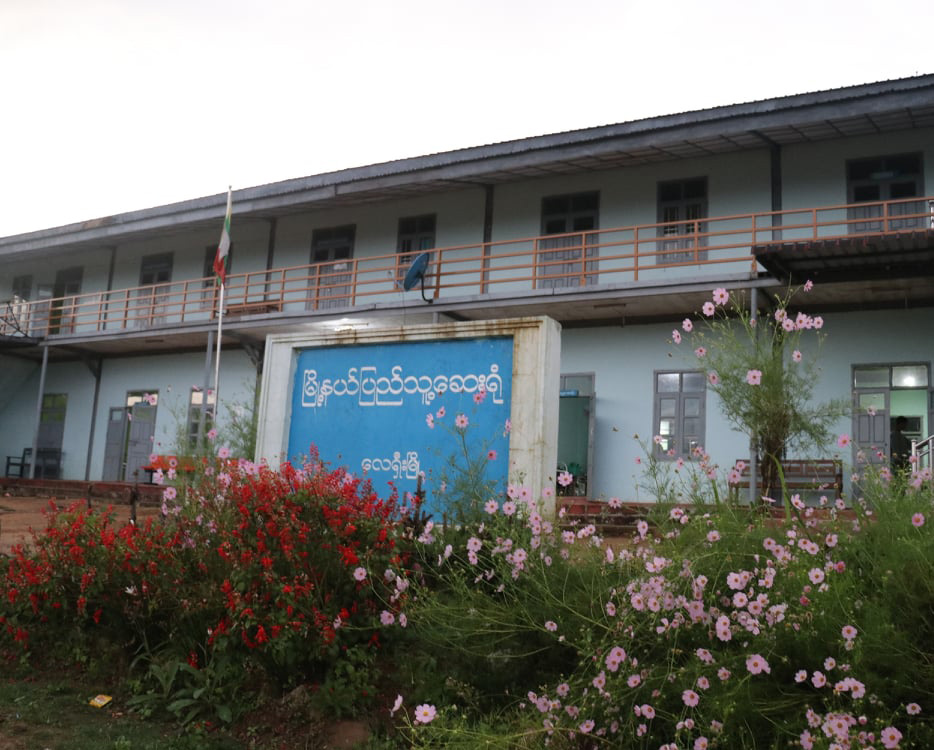YANGON—The Naga Self-Administered Zone (SAZ) in Myanmar’s Sagaing Region is facing a serious shortage of health care workers as doctors have refused to work in one of the least-developed areas of the country, said Sagaing regional lawmaker for Leshi Township U Kyaw Htay.
The Naga SAZ is home to some 130,000 people, mostly from the Naga ethnic group. The zone is made up of the three townships—Lahe, Leshi and Namyun—and five sub-townships—Donhee, Htanparkway, Mobaingluk, Pansaung and Sonemara.
Though the region has health care infrastructure in terms of township and sub-township hospitals and health care centers, it has only two doctors for its three townships—five doctors less than it should have, according to the standard organizational structure of Myanmar’s health care system.
“Doctors don’t want to work in our area. Most of the doctors who were assigned to here have either resigned or applied for transfer to other places. That is why their positions are vacant. [Doctors don’t want to come] because this place is remote, and also perhaps because of money,” said U Kyaw Htay.
Union Minister for Health and Sports Dr. Myint Htwe said during the parliamentary session on Monday that doctors refuse to work in remote areas because they are only given a pay bonus if they stay for four months or longer.

“Civil servants are given double salaries only when they work in remote areas for four consecutive months. Those who only work for less than four months are not paid double salaries, so if a doctor is assigned to work in a remote area for three months, they get only their standard salary,” Dr. Myint Htwe told the Parliament.
“I don’t agree with this and I have complained about it to upper level authorities,” he added. “Those who work for only one month in a remote area must be given double their salary. The chief of the [Sagaing] Region health department told me that doctors refuse to work in remote areas if they are not paid double salaries. Rather than going there, they resigned,” he added.
Dr. Thet Zin Aung of Lahe Township Hospital said he used to receive double his standard salary for working in remote areas, but since policies have changed, he now only receives his standard salary of 88,000 kyats per month (US$62.63).
Namyun Township regional lawmaker U Wun Hla said his township has seen numerous unnecessary deaths due to a lack of doctors in the Naga SAZ.
In 2016, a measles outbreak killed more than 80 people across the Naga SAZ. The area also has the highest prevalence of malaria and tuberculosis in Myanmar.
The Health Ministry has announced that it is recruiting over 600 doctors for local hospitals in ethnic-majority areas this year. But only 29 applied for the jobs and no one applied to serve in Kayah State, Union Minister Dr. Myint Htwe told the Parliament. The ministry reportedly opened recruitment for 77 doctors to work in Kayah State.
The ministry received three applications for 65 doctor positions in Kachin State, one application for 42 positions in Karen State; two applications for 74 positions in Chin State; 13 applications for 20 positions in Mon State, three applications for 105 positions in Rakhine State and seven applications for 241 positions in Shan State.
Translated from Burmese by Thet Ko Ko.
You may also like these stories:
Hotels to Slash Wages in Myanmar’s Capital Because of COVID-19 Closures
Pastors Arrested for Holding Gatherings Amid Myanmar’s COVID-19 Restrictions
















